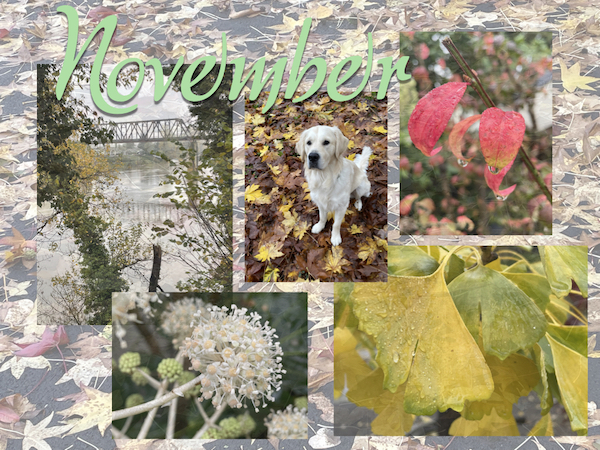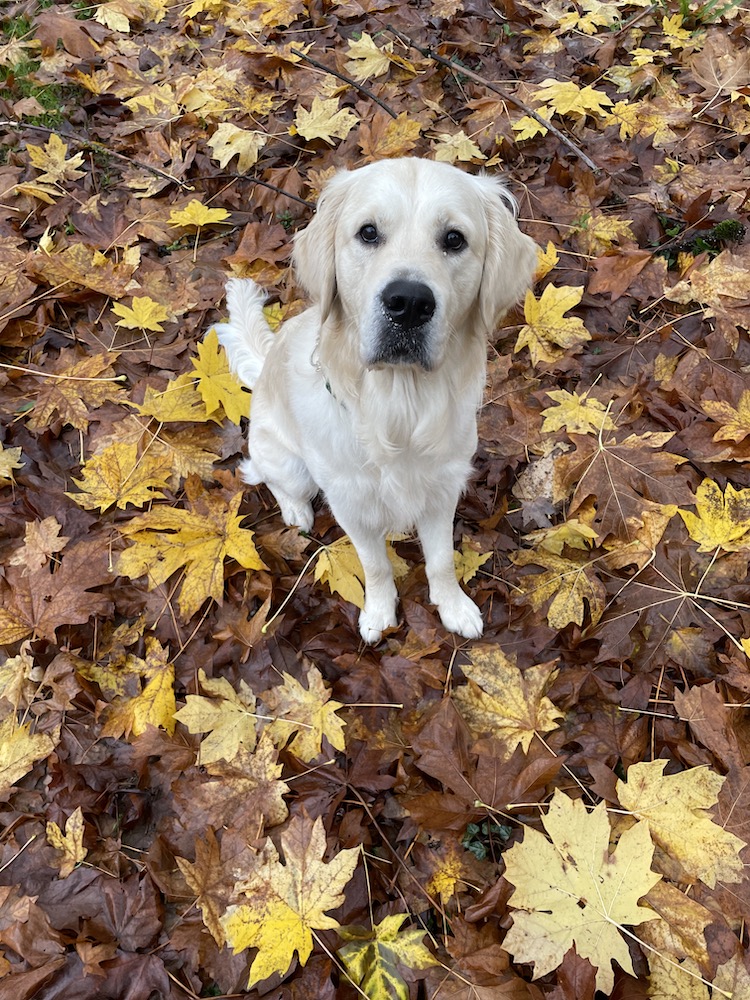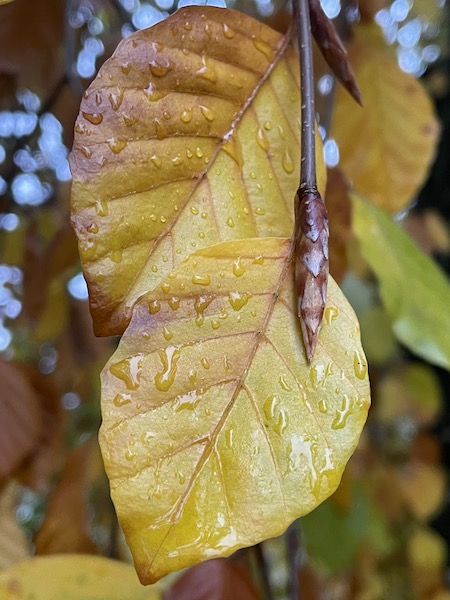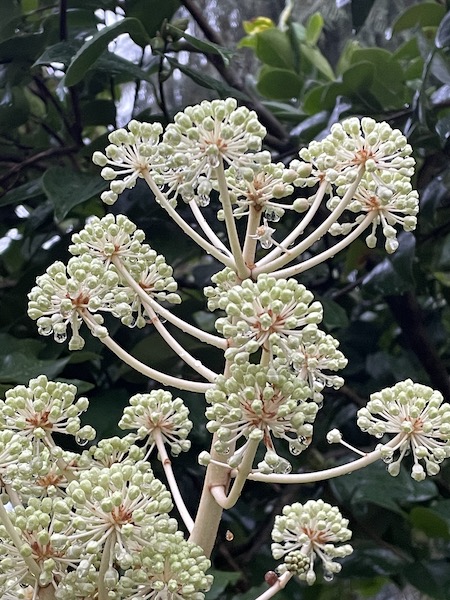
This guide is tailored for the western valleys of Oregon and Washington.
YOU can help to make the world a better, a more friendly, loving and beautiful place by being a good steward of the spot on this earth that you are privileged to be borrowing for a time—your garden. Nathan, the Treevangelist, urges you to treat your spot on this planet like your own personal Garden of Eden paradise. Then notice the joy that it will bring to you! This is your divinely mandated responsibility. Your trees, shrubs, flowers and the wildlife in your yard will express their smiling appreciation back to you and to others as they radiate love, joy and beauty bursting forth with vibrant and verdant life. Below is a to do list to help you to do just that.
After an atypically long summer (it started in early June) with record high temperatures and severe drought conditions, with the advent of fall, the climate suddenly turned an abrupt corner and someone upstairs turned on the water spigot. Thank you Lord for answering our prayers!
So the big name stars that are capturing the headlines for this November are Stormy Rain, Falling Leaves and Cool Gray. And I don’t want to hear any complaints from the audience either, because we need these actors to do their thing on the seasonal stage for the greater good that benefits us all. Sermon done…(for now, at least).
While you’re at it, take a few moments and scroll back through this same Good News Tree Service, Inc. blog and check out the archives for any tree and plant care articles that you may have missed. Also check out our YouTube channel at https://www.youtube.com/channel/UCvcu2lL9NpgoXQtUFYyQShw, our Facebook page at https://www.facebook.com/GoodNewsTreeService/ and our main website at https://goodnewstree.com. Please enjoy!
Readers’ suggestions on how to improve this list are gladly solicited. If you, the reader, have any suggestions for additions to this month’s list, please put them in the comments section of this article, and I will add them to the list. Thank you in advance! — Nathan
Tree and Shrub Care
- Fruit tree sanitation. To prevent possible spread of leaf diseases, rake up and remove leaves from around the base of fruit trees.
- Fruit tree pruning. After the leaves drop is an excellent time to prune trees that are done fruiting and for aesthetics, since wounds will heal more quickly in warmer weather than occurs in winter. This is also a good time to reduce the height of overgrown fruit trees, since they are likely to produce fewer water sprouts now then when pruned in the spring.
- Storm proof your larger trees. Checking your trees for hazards and then take the appropriate measures to protect your trees from storm damage. If you’re not sure about the condition of your trees or even what to look for, call Good News Tree Service, Inc. for a free on-site consultation.
- Large trees. After each major weather event, check your trees for damage such as broken or hanging limbs. If you have concerns or questions about your trees, have an ISA Certified Arborist with an ISA Tree Risk Assessment Qualification (like Good News Tree Service, Inc.) inspect your large trees for damage or the potential of failure due to weak root systems and defects in trunks and branches.
- Trees—storm issues. With the advent of winter storms and the potential damage that they may inflict upon your trees, have an ISA Certified Arborist with an ISA Tree Risk Assessment Qualification (like Good News Tree Service, Inc.) inspect your large trees for the potential of failure due to weak root systems and defects in trunks and branches. This can be done anytime of the year, but now, before the winter storms hit, is an excellent time to proactive assess the condition of your trees for potential limb and trunk breakage.
- Mulch trees and shrubs. Apply two to three inches of mulch around all trees and ornamental shrubs. This helps to fertilize the plants and feed the soil, and also protects them against weed growth and loss of water when the warmer weather returns, and helps to insulate the roots against cold weather in the winter.
- Plant or transplant trees and shrubs. After the cold, seasonal rains have started is a good time to plant or transplant ornamental trees and shrubs. Cooler weather means less transplant shock to the plants, and over the winter and spring, they will have time to begin to acclimate to their new environment before the stress of the next summer season occurs.
- Prune your trees and shrubs. This is a good time to start pruning your deciduous trees and shrubs after the leaves have fallen and a tree’s branching structure is clearly visible making pruning easier. If you’re not sure what to do, or how to do it, call Good News Tree Service, Inc. for a consultation, pruning lessons or to have them to the pruning for you.
- Prune coast/shore pines (Pinus contorta) and Scotch/Scots pines (Pinus sylvestris). These two pines are especially susceptible to the sequoia pitch moth whose larvae burrow into the tree trunks during the growing season (April through September) causing the trees to exude large amounts of unsightly pitch globules. While this seldom kills the tree, the bleeding of sap is not good for the overall health and vigor of the tree. It is advisable, therefore, not to prune these pine trees during the growing season, since the pruning cuts attract the moth, which then lays eggs on the tree, which hatch into tree-burrowing larvae. Pruning should be done on your pines from November to March.
Plant Health Care
- Arborvitae Berckmann’s Blight (Platycladus orientalis). Spray with copper twice in the fall (late Sept. and early Oct., and again in early Nov. Spray again in early spring (Feb to Mar) if disease is severe.
- Fertilize trees and shrubs. Use with a low nitrogen granular fertilizer. The fall and winter rains will slowly dissolve the fertilizer into the soil and down into the roots. Roots continue to grow throughout the winter, so it’s good to feed them for the overall health and vigor of the plant. You can also have Good News Tree Service, Inc. deep root fertilize your trees and shrubs via injection of liquid fertilizers and soil conditioners directly into the root zone of the tree through hydraulic pressure.
- Deep Root Fertilization Trees and Shrubs. If the soil temperatures permit, hire Good News Tree Service, Inc. to fertilize your ornamental shrubs and trees (via hydraulic injection) to improve their root health during the winter season and to prepare them for the upcoming spring and summer growing season. When you do this, you will notice a marked improvement in the looks of trees and shrubs.
- Magnolia Bacterial Blight. If your magnolia bush or tree has blighted leaves and flowers (dark, irregular spots) and the new shoots wilt and die in the spring, it may be magnolia bacteria blight. To treat, the magnolia needs to be sprayed once in the fall and twice in the spring near bud break.
- Verticillium wilt. Treat maples and other trees against this potentially lethal soil borne fungal pathogen. The fall is the best time to treat your plants against this disease, and spring is the second best time. Maples are especially plagued by this disease. During hot weather, symptoms include smaller than normal cupped leaves in the upper canopy, often with the death of the entire branch occurring. Maples are the hardest hit trees by this disease. Other trees susceptible to this persistent and potentially lethal fungal root disease include ash, box elder, golden rain tree, mountain ash, prunus spp. (cherry and plum), redbud, tree of heaven or silk tree, southern magnolia, tulip tree.
- Willow Twig (Bacterial) Blight. Apply copper spray fungicide after the leaves drop.
Elsewhere in the Garden
- Put slug bait around winter flowers.
- Plant spring flowering bulbs.
- Rake and dispose of ornamental tree leaves, or better yet, compost them and then spread the decomposed leaves back onto your shrub beds as a mulch next year.
- Mulch your shrub beds. Put a two to three inches of mulch (e.g. bark dust, garden compost or wood chips) around perennials and other plants that might be sensitive to subfreezing weather. Also, spread a fresh layer of mulch (e.g. bark dust, garden compost or wood chips) on all the bare dirt areas in your yard to prevent soil compaction from rains, to prevent weed growth and to enrich and help to condition your heavy clay soils. Adding a layer of mulch (several inches thick) over any tender perennial flowers, especially if the weather turns extremely cold and the ground freezes, will prevent the death of flowers such as dahlias.
- Winterize your irrigation system. Provide winter protection to in-ground irrigation systems by draining them and insulating valve mechanisms.
- Winterize your outdoor faucets. Protect outside faucets from subfreezing temperatures, and drain and store garden hoses in your garage or garden shed.
- Cut English ivy off of the base of trees. (This can be done any time of the year.)
- Feed the birds. Dutifully maintain your bird feeders. As winter comes, birds have a harder time finding food. This includes both seed and suet feeders. During dry spells, keep your bird bath watering hold full of fresh water. Caring for the local wild birds brings life and excitement to your backyard by turning it into a bird-friendly sanctuary. The birds will thank you for your generosity by providing you with hours of entertainment, and by eating insect pests that harm your ornamental trees and shrubs. Remember to feed your local humming birds that overwinter in our region. If possible, fill your humming bird feeders with a syrup that contains only 100 percent sugar (e.g. sucrose or dextrose) minus any artificial sweeteners, red dyes and other chemicals. Your birds will be healthier for it. You can find excellent bird care products and advice from knowledgeable and caring professionals at your local Backyard Bird Shop.
Rose Care
- Mid to late fall. Prune your roses down by about one-third and remove any dead flowers and dead or diseased canes.
- Anytime of the year. Heavily mulch your roses. Organic mulch (such as wood chips, rotted compost, rotted manure) is the best. While barkdust helps to hold moisture in the soil, it contains little or no nutrients, so it doesn’t feed the soil and thus won’t feed your roses.
- For more information on the care of roses, go to the Portland Rose Society website at https://www.portlandrosesociety.org/all_about_roses.html.
Lawn Care
- Fertilization. Late in the month, apply winter fertilizer which is vital to maintain healthy turf.
- Mowing. Continuing mowing as needed while the grass is still growing if conditions are not excessively wet and cold.

My wife, Sandi, (and I as her assistant) volunteer for a non-profit accredited organization that trains service dogs for PTSD and mobility issues. Zulu, an English Golden Retriever, is currently assigned to us.
The service dog training program for which we are volunteers is JLAD (Joys of Living Assistant Dogs) at https://www.joydogs.org) out of Salem, Oregon. JLAD is an ADI accredited program that is comprised of some 40 volunteers who take these dogs temporarily into their homes (at their own expense) to help train them.
Currently, JLAD also works with two prisons in Oregon where residents live with and do an amazing job training these wonderful dogs as an important part of their journey to become full service dogs.
When the dogs exit the program, they must pass a set of rigorous tests to be approved as a certified service dog. For those people who are recipients of these highly intelligent and beloved animals, it can make all the difference in their lives as these dogs are trained to respond to some 90 commands and to perform numerous tasks for disabled people.
If you are inspired to make an end-of-the-year donation to a worthy cause, consider JLAD as a recipient of your generosity. You can donate at https://www.joydogs.org/donate.
You can also contact JLAD through their website if you are interested in becoming a volunteer.
Thank you and may God bless you!



